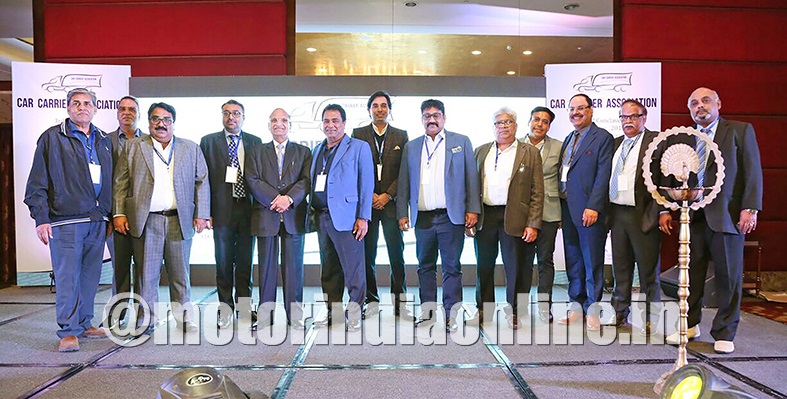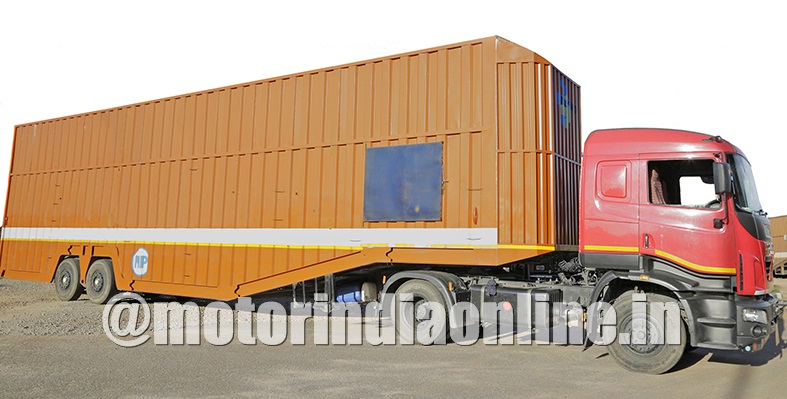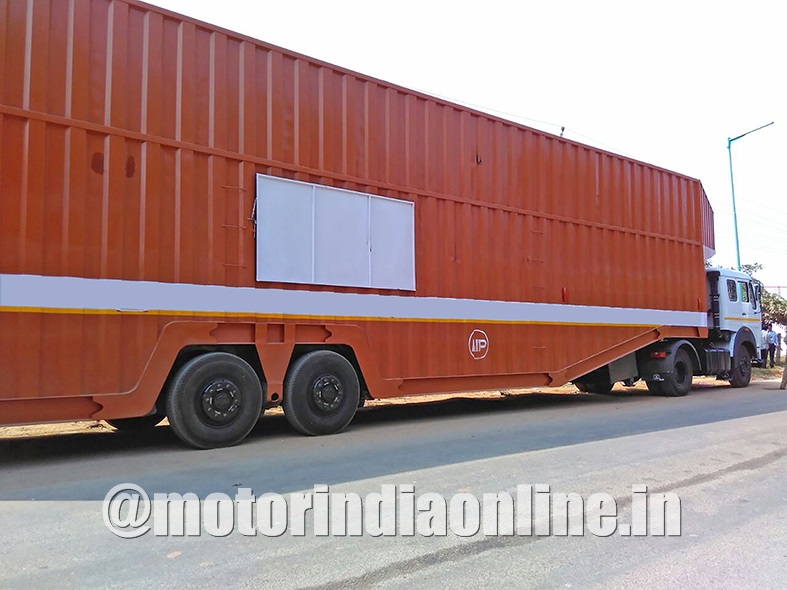Facing a multitude of challenges posed by sluggish domestic car sales, soaring operational costs, overcapacity of fleets, and booming rail-based automotive logistics, the car carrier industry is far from happy. Yet, the industry keeps its chin up, making headway in productivity and efficiency. In conversation with Mr. Vipul Nanda, President of Car Carrier Association of India (CCA).
Every time we get a brand-new car delivered to us at the dealership, the feeling of holding the keys can be as overwhelming and exciting as the first time itself. A moment of joy that is, we often forget to wonder how the car found its way into our hands in the first place. Surely it isn’t like a pizza we ordered at the food kiosk, baked inside while we wait and served sprucely hot. Like every other merchandise we buy, cars do undergo the same eternal processes to reach their end users. They are assembled somewhere, made to wait indefinitely at stockyards and embark upon journeys inside closed containers to finally meet their gleeful owners. No matter how mammoth they are in size, they are transported thousands of miles safely and swiftly, with their pristine charm intact, thanks to truck-bound car carriers.
Ever since the advent of modern cars aimed at the mass market in the 1980s, particularly brands like Maruti Suzuki, the car carrier industry began to take shape in India in a big way. Today, it includes several transporters operating about 15,000 trailers and some 3,000 containerized rigid trucks across the country hauling over three million cars every year and doing a business worth Rs. 4,000 crores plus approximately. Of this, a majority of car carrying trailers are registered in Haryana, with Gurgaon being a major hub for car carriers in India, locating around Maruti Suzuki, the largest car maker in terms of domestic sales. Mumbai-Pune and Chennai are the other regions where car carriers are based in, along with a few players from the Eastern belt. While voluminous haulage happens to and fro between the North and South, the Eastern region is gradually opening up with increased car sales in north-eastern States and exports to Nepal, Bhutan, and Bangladesh.
‘Out-there’ logistics
Representing more than 90 per cent of the car transporters that account for 96 per cent of the trailer fleets in the country is the Car Carrier Association of India (CCA). Says its President, Mr. Vipul Nanda: “The car carrier industry is most challenging aspect of trucking logistics, with its operational terms and demand-supply scenario far from ideal”. With limited return on investment and profit margins, compounded with the problem of over-capacity, the industry’s operational growth and consolidation is heavily dependent on the growth of car makers and passenger car sales in the country.

CCA was formed in 2015 to represent the industry at the negotiations with the Central and State Governments to bring car carriers conform to the CMVR norms, a segment that was previously ignored under the Motor Vehicle Act. When the Central Government came up with a legally enforceable maximum length of 18.75 metres for car carrier trailers a year later, the association played a commendable role in making the entire industry CMVR-compliant.
“CCA passed a swift resolution calling for all its members across the country to comply, which they all did in some five months time. It’s perhaps an ideal example of discipline shown by transporters in the domestic logistics industry”, claims Mr. Nanda.
With growing demand, car carrier fleets proliferated in the country over the last decade up until 2012. However, says the CCA President, the volumes came down significantly in mid-2010s and stiff competition, both within the industry and railways, exposed the overcapacity. “Although the new CMVR regulations did offset the overcapacity issue by standardising trailers from 22-metre plus to 18.75 metres, auto logistics through railways has grown significantly in the past five years, starving us of long-haul demand and bigger loads. Car sales in recent times also remains sluggish, resulting in a palpable sense of overcapacity,” he observed.
No room for capex
An era of fluctuating fuel prices that are tweaked everyday is yet another headache for car transporters. Since automotive logistics is demand-supply oriented, OEMs fix contracts based on a certain costing framework, which often misses out off-setting clause for fuel prices. Plus, the loads are volumetric rather than raw weight, which significantly affects their operational revenue and profit margins as against other bulk trailers.
“We have to manage our return freights in such a way that there is at least some utilization, if not to the optimal level, as we cannot ferry any other”, Mr. Nanda says. And, of course, revised axle load norms make no difference to this industry whatsoever.
Moreover, the car carrier business is investment-intensive and asset heavy, and higher depreciation costs incurred by fleets seem to impact their capex significantly. Mr. Nanda explains that a car transporter trailer costs about Rs. 35 lakhs on an average, notably higher than other kinds of trailers owing to the limited production akin to market demand.
“For a transporter, that’s a huge investment and has to be financed from external borrowings. If the trailers do not achieve maximum utilization level within their average life span of 8-10 years, they end up incurring losses”, he says, while adding that passenger car sales in India is highly seasonal and the flow of cargo across different regions is not balanced, leading to revenue uncertainties.
He also acknowledges the poor infrastructure and R&D set-up for car carrier trailers in India. Limited volume demand and feeble investments by fabricators on improving design and engineering are the other factors.
“Now, under legal regulations, we can expect further consolidation and innovations in car carrier business in India. Despite all odds, we expect decent growth with better utilization of fleet, with no new addition, and improved operational efficiency, which can help us gain huge momentum to bounce back.
– Mr. Vipul Nanda, President – Car Carrier Association (CCA)
“Now, since we are settled with basic rules, we can expect innovations in trailer designs in future”, he says. The industry came up with the concept of chassis transportation as early as 2011, with innovatively-engineered trailers to haul both truck chassis and fully-built buses. The concept was actively supported by the CV makers as well, as it gave them an opportunity to deliver vehicles to their customers in fine condition.
He further observes: “But the viciousness of market disadvantaged this segment. The CV market faced a severe downturn since 2012, which is now bouncing back only in the last two years. Limited domestic sales and growth rendered chassis transportation unviable cost-wise, as it became cheaper for OEMs to dispatch their vehicles through jockey drivers than chassis carriers”, notes Mr. Nanda, who is also the founder and board member of Mercurio Pallia Logistics that pioneered the ‘truck-on-truck’ chassis carrier business in India. Now that the CV sales are going up, it is upto the OEMs to support chassis carrier depending on their costs and customer satisfaction priorities, he opines.
Setting things right
Largely dependent on OEMs for demand and contract pricing, car carriers want automakers to support them with better pricing and long-term contracts with prolonged tenures. CCA calls for a better understanding of the freight terms and costs between transporters and their customers during contract negotiations. This is vital for the sustainability of car carrier business in the coming days. In addition, fleet consolidation and enhancing operational efficiency can make huge gains for auto haulers. According to CCA, that is involving various agencies and experts to help its members with best practices, including driver training.
The Association also calls for active Government intervention to stop unwarranted harassment of car carriers by the police and RTO officials on roads. “This is a persistent menace that seems to hardly settle in spite of the legal status to trailers under CMVR. Fines and bribes add to our operational burden”, he asserts.
He also wants more attention from the State on improving the infrastructure and safety provisioning on highways, including secure parking bays and resting facilities for drivers, along with some pragmatic mechanism for national level permits for NH tolls, so as to escape long queues and waiting period at toll gates.
Asked about the way ahead for car carriers, Mr. Nanda is cautiously optimistic when he says that market dynamics will stabilise and bounce back for the greater good in the next five years. “With the general elections and upcoming BS-VI regulations, the next two years seems hardly promising for the passenger car market in India. Rail-based automotive logistics is making a strident progress as well. Yet, the industry can still expect a decent growth through better utilization of fleet with no new addition. This can help gain huge momentum to bounce back for future needs”.

